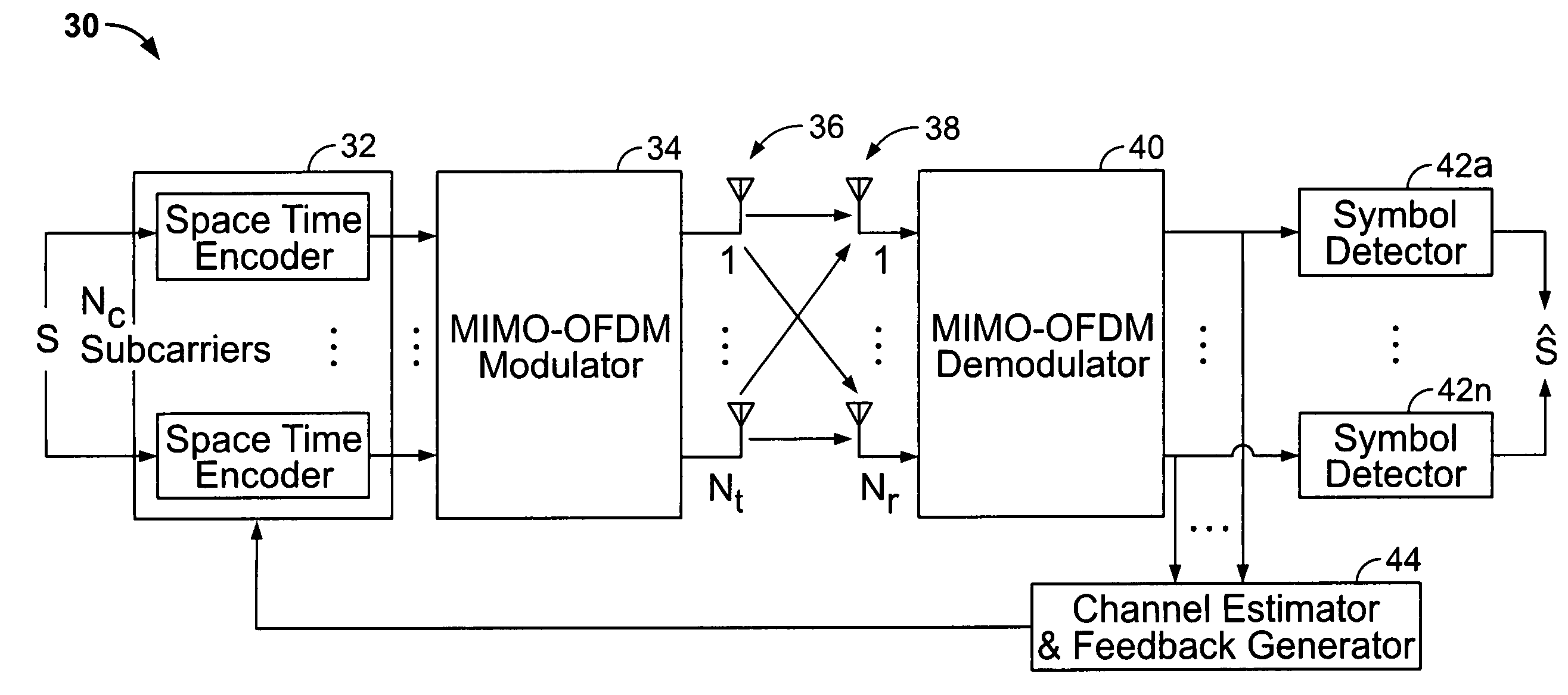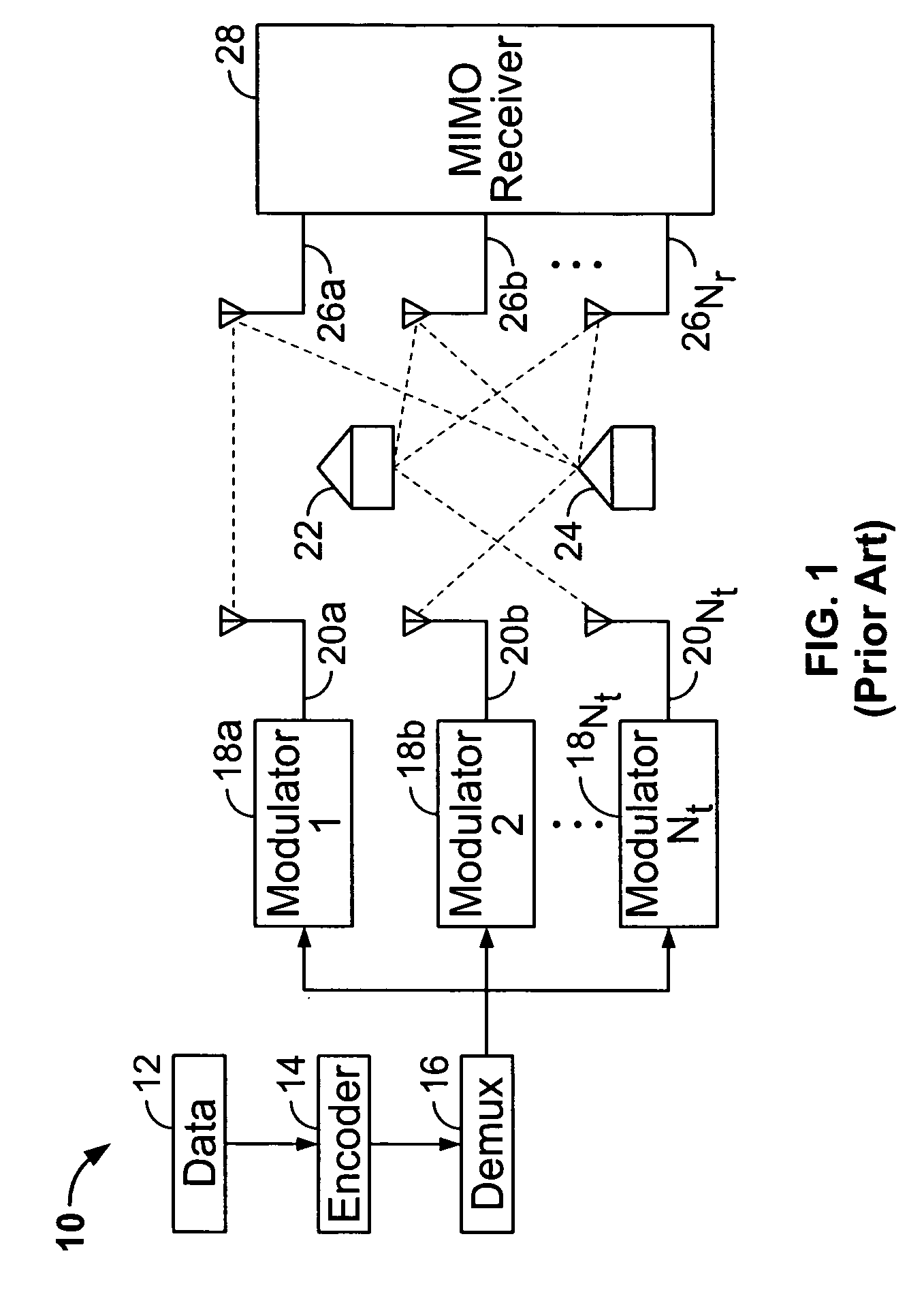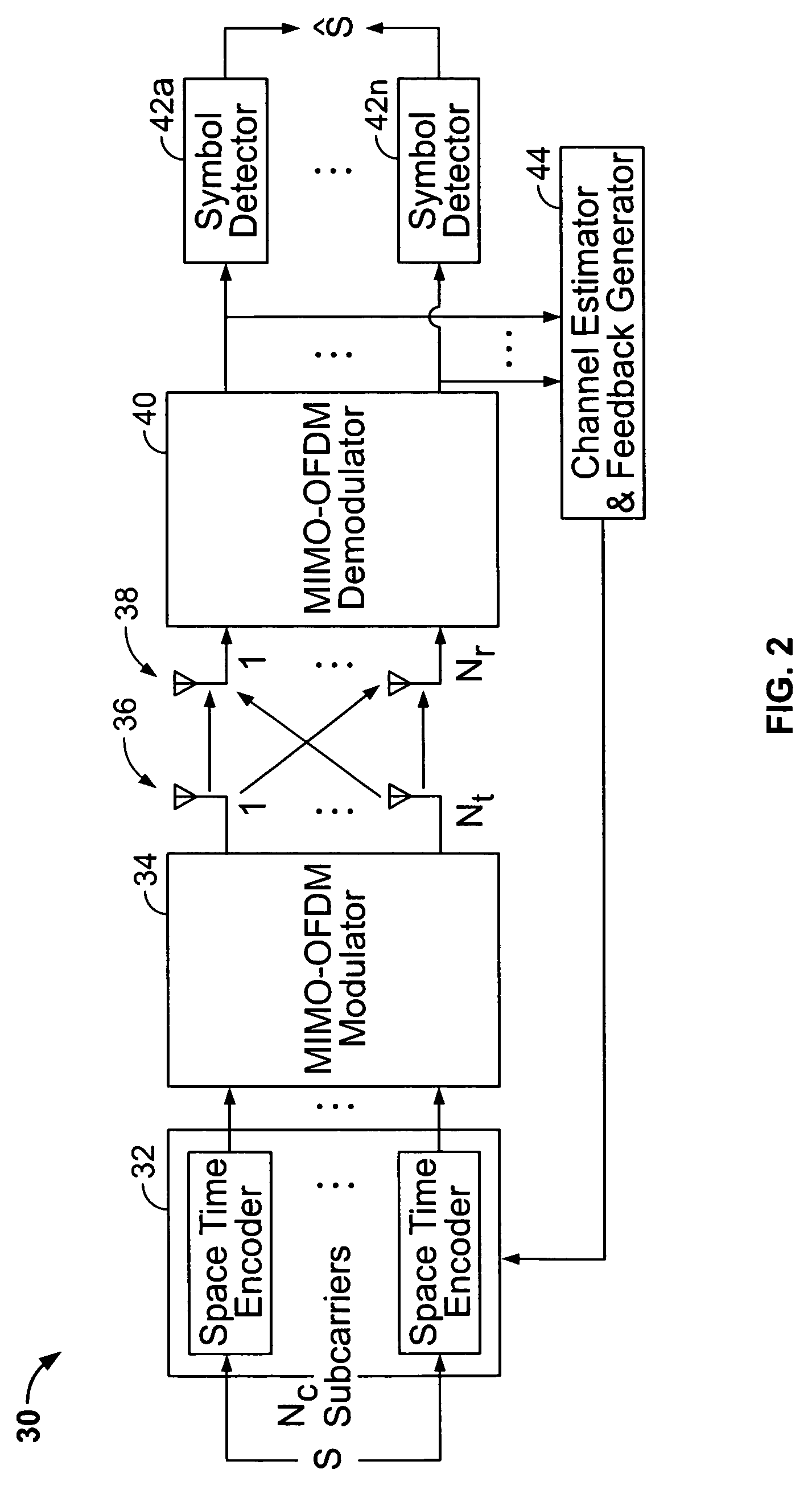Recursive and trellis-based feedback reduction for MIMO-OFDM with rate-limited feedback
a rate-limited feedback and trellis-based technology, applied in the field of digital wireless communication, can solve the problems of fading of the medium, interference from other users, and high cost of transmission of the matrix, so as to reduce the feedback and maintain the effect of performan
- Summary
- Abstract
- Description
- Claims
- Application Information
AI Technical Summary
Benefits of technology
Problems solved by technology
Method used
Image
Examples
Embodiment Construction
[0035] The present invention may be used in conjunction with a MIMO-OFDM system to reduce feedback while enhancing communications. The disclosed methods and techniques of the present invention employ a feedback method that uses vector quantization compression to minimize the amount of feedback data sent to the transmitter for improving communications between MIMO-OFDM systems. In general, the present invention involves the steps of: receiving a plurality of symbols from a plurality of sub-carriers at a receiver; selecting a plurality of indices of codewords corresponding to a codebook of pre-coding weighting matrices for the sub-carriers based on vector quantization compression of the codewords; and transmitting the selected indices over a wireless channel to the transmitter.
[0036] With initial reference to FIG. 2, a block diagram of a MIMO-OFDM system using a vector quantization feedback arrangement is provided, generally indicated at 30, and constructed in accordance with an exem...
PUM
 Login to View More
Login to View More Abstract
Description
Claims
Application Information
 Login to View More
Login to View More - R&D
- Intellectual Property
- Life Sciences
- Materials
- Tech Scout
- Unparalleled Data Quality
- Higher Quality Content
- 60% Fewer Hallucinations
Browse by: Latest US Patents, China's latest patents, Technical Efficacy Thesaurus, Application Domain, Technology Topic, Popular Technical Reports.
© 2025 PatSnap. All rights reserved.Legal|Privacy policy|Modern Slavery Act Transparency Statement|Sitemap|About US| Contact US: help@patsnap.com



